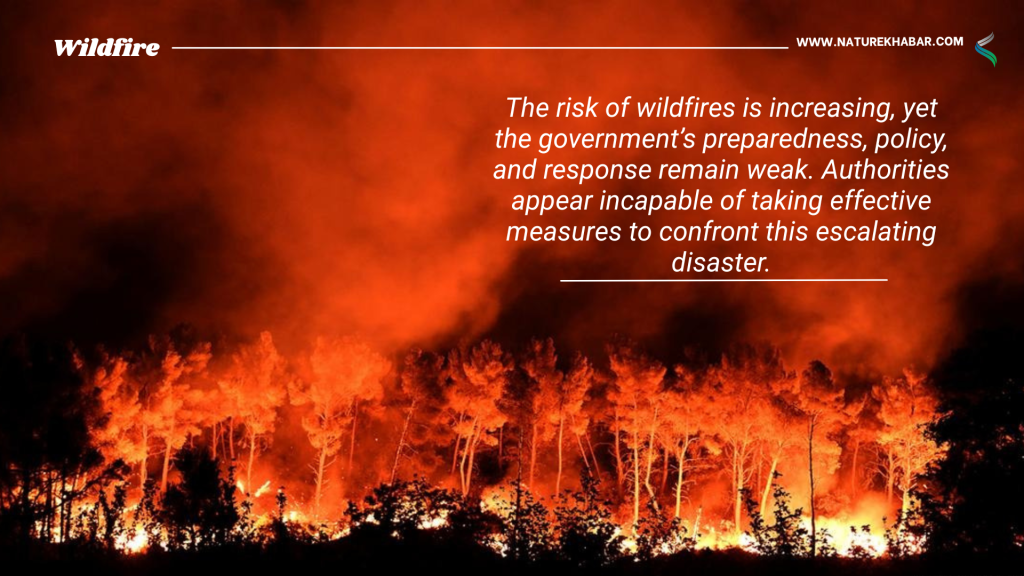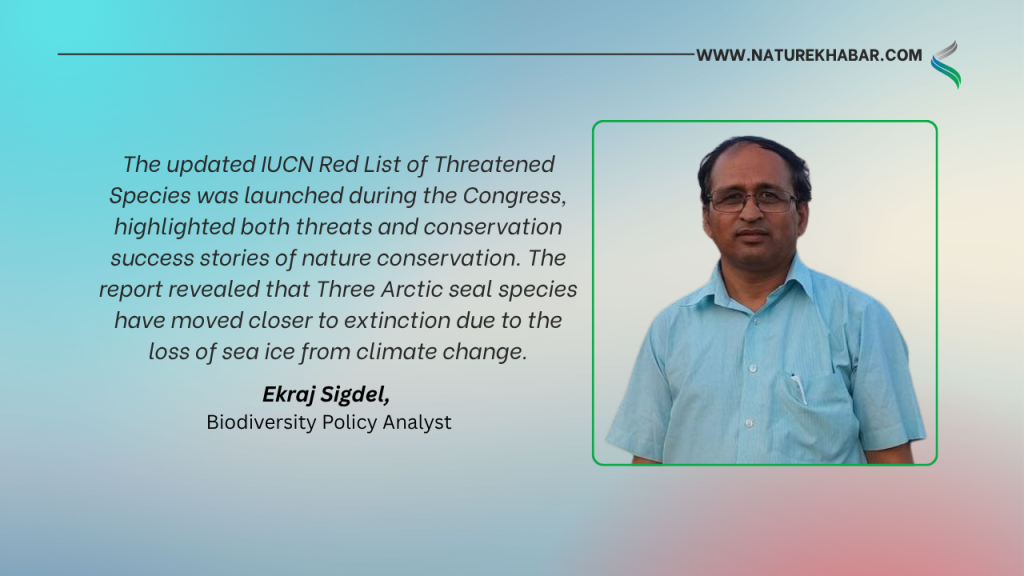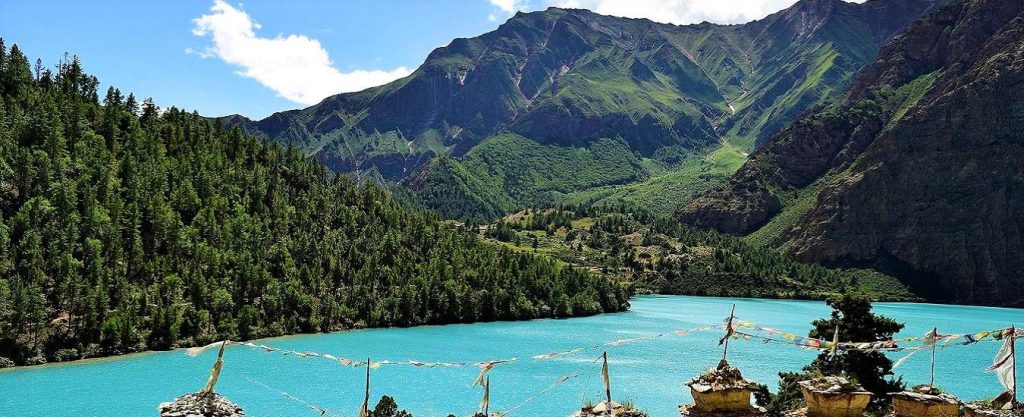Preserving Nepal’s Indigenous Communities: Assessing the Need for Expanded Protected Areas
- Nature Khabar

- Sasha Sunuwar,
Nepal currently has 20 Protected Areas (PAs) stretching from the lowland Terai to high mountains comprising 12 National Parks, 6 Conservation Areas, one Wildlife Reserve, one Hunting Reserve, and 13 Buffer Zones - the PAs cover about 23.39% of the country. Despite covering only 0.1% of the global area, Nepal contributes to 3.2% and 1.1% of the world’s flora and fauna. Undoubtedly, the PAs significantly support floral and faunal biodiversity and cultural and religious heritages within the areas. But is it enough ?
A study by the National Proceedings of the Academy of Sciences revealed that many of the world's mammal species are at risk of extinction due to inadequate protection within the existing global network of PAs. Researchers examined nearly 4,000 land-based and non-flying mammal species residing in PAs and discovered that many of them are situated in habitats too small or poorly connected for the animals to flourish.
The highest concentration of underprotected species was observed in regions known for their rich biodiversity, such as South, Southeast, and East Asia; Latin America and the Caribbean; Africa; and Oceania. To effectively conserve biodiversity, the suggestion of essential expansion of both the size and quantity of PAs while enhancing their connectivity.
The expansion of Bardia National Park (BNP) in the 1980s has contributed significantly to increasing the number of Royal Bengal Tigers to 125 (Tiger Census 2022) in Nepal. Additionally, it emphasizes the importance of locating PAs strategically and managing them with a comprehensive understanding of the habitat requirements of the animals. Amidst conflicting land use policies, limited financial resources, and pressures for resource extraction is the expansion of PAs in Nepal possible though ?
Even though the establishment of PAs in Nepal seems right from a conservation point of view, it does come with a hefty amount of issues; especially indigenous rights. In the past, local communities had unrestricted access to areas that are now designated as PAs, resulting in their loss of access to resources essential for their livelihoods. As these areas became subject to legal regulations, people found themselves excluded from their traditional use of natural resources.
This exclusion has led to increased illegal activities within protected areas, such as poaching and unauthorized logging. Furthermore, local communities often lacked access to compensation for damages caused by wildlife or protected animals.
Due to various movements and negotiations, some indigenous communities have been successful in claiming their rights back from the PAs. Fisherfolks residing on the banks of the Narayani River gained fishing rights in 1999 after years of protest against Chitwan National Park (CNP) whereas poor local women of the Sardar community gained access to harvesting Pater- a thick grass used in making handmade mattresses on a seasonal basis from KoshiTappu Wildlife Reserve (KTWLR) are few of the instances. So, does this mean the expansion of the number of PAs is possible as long as the rights are provided ?
Although the recent policies and practices of PAs have provided some recognition of indigenous rights and roles, there are still huge gaps in proper policy implementation. Not all indigenous communities are on the receiving end of the fishing licenses; but rather at the mouth of harassment, discrimination, and death especially in the lowlands. The regulation of the CNP eliminates Majhis from the traditional fishing communities, the 1996 Bardia National Park (BNP) Regulation allows Bote, Darai, Kumal, and Tharu communities to obtain fishing licenses for a fee of 100 Nepalese Rupees under the condition of using only fishhooks and in 2018–2019, CNP halted new fishing licenses for the Bote community to protect aquatic life. Regulations in Nepal lack meaningful participation and respect for Indigenous Peoples' rights, including free, prior, and informed consent (FPIC). Government efforts to include marginalized groups often face skepticism, perpetuating a cycle of discrimination and hindering equitable development for Indigenous Peoples, particularly women and girls. Between January 1, 2020, and June 24, 2021, CNP documented 22 cases of harassment, abuse, and torture, affecting 139 indigenous men, and 397 indigenous women. Notably, all incidents involving women occurred while gathering vegetables and ghongi, a traditional Tharu dish, within the park. In KTWLR, a woman who had delivered a baby just 13 days earlier was instructed to perform Uth-Bas (sitting down and rising) 100 times upon entering the protected area to gather fodder for her goats.
The present scenario of discrimination, harassment, and even death of indigenous communities in and around PAs demotivates the expansion of PAs. Because it seems as if the PAs in Nepal are just about floral, faunal, and not people. Rather, the efforts to rehabilitate indigenous rights if not reinstate them completely, should be pursued and new mechanisms of collaboration in terms of policymaking should be implemented. In the Annapurna Conservation Area Project (ACAP), Gurung and Thakali communities collaborate with conservation authorities to manage resources sustainably, preserving biodiversity while promoting community-based tourism initiatives that benefit local livelihoods. Instead of focusing on the expansion of PAs, shifting the focus to indigenous rights within PAs is important as findings suggest that PAs with the active involvement of Indigenous peoples in management and decision-making show better outcomes in conservation and human rights protection.
(Sunuwar is undergraduate student of environmental science at Kathmandu University, Dhulikhel and a recipient of WWF Nepal's Nepal Conservation Memorial Scholarship 2021.)





Feedback